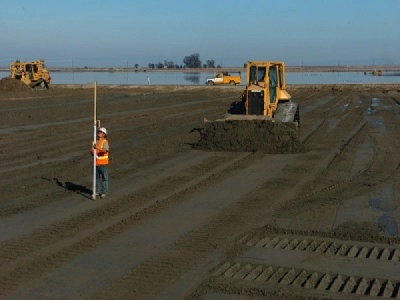
Posted on January 1, 2019
A habitat restoration project seeking to restore nearly 1,600 acres of wetlands near Bel Marin Keys in Novato advanced this month with the approval of a $5.7 million state and federal agreement.
Under the agreement, the California Coastal Conservancy and the U.S. Army Corps of Engineers are slated to bring dredge materials to three Bay Area restoration projects, including to what will be the largest portion of the nearly 20-year-old Hamilton wetlands restoration project.
Authorized by Congress in 1999, the state and federal project has restored close to 1,000 acres of ecologically valuable tidal marshlands at the Hamilton Air Base as of 2014. The land had been diked and drained about 150 years ago to allow for agricultural development, as has happened with much of the state’s wetlands. As a result, much of the wetlands near Bel Marin Keys had subsided, causing the loss of wildlife habitat.
The “Bel Marin Keys Unit V” phase of the Hamilton project is one of three restoration areas, the other two being the already completed Hamilton Air Base portion and smaller the North Antenna Field.
The Bel Marin Keys portion, owned by the conservancy, is by far the largest at 1,576 acres. When the project is finished, there will be 2,600 acres of contiguous wetlands that can serve as habitat for the federally endangered Ridgway’s rail and the salt marsh harvest mouse.
Like the air base restoration, the Bel Marin Keys project plans to use dredge spoils — about 9.5 million cubic yards’ worth — to construct the tidal wetlands.
The agreement approved by the California Coastal Conservancy on Dec. 7 will take dredge spoils from the Redwood City Harbor and use it to rebuild the wetlands as has already occurred near the Hamilton Air Force base.
The conservancy’s project manager, Jeff Melby, said it will be a couple of years before crews are ready to receive dredge spoils for the Bel Marin Keys project, expected to occur in 2021. As a result, most of the dredged materials will go to other projects.
“Sediment from other dredging around the bay (such as at the Port of Oakland and Port of Richmond and Pinole Shoals) could provide the sediment needed at Bel Marin Keys,” Melby wrote in an email.
Marin Audubon Society President Barbara Salzman says that using dredge materials speeds up what would otherwise be a lengthy natural buildup of sediment. The organization is proposing to use dredge spoils as part of its own wetlands restoration project at Tiscornia Marsh in San Rafael.
“The benefits are that if you can get clean dredged material … it raises up the elevation so the marshes restore more quickly,” Salzman said. “Usually these diked bay lands like Bel Marin Keys, when you take water off of marshes the soil sort of subsides and the land subsides. It doesn’t come back just by putting water on it.”
The former Hamilton Air Base received nearly 6 million cubic yards of dredged sediment, primarily from the Port of Oakland, to restore a mix of tidal and seasonal wetlands. The tide’s influence was reintroduced back in 2014, and wildlife has already taken well to the new habitat.
“The restoration project has been supporting large numbers of birds and fish and other aquatic species,” Melby said.
Source: Marin Independent Journal





